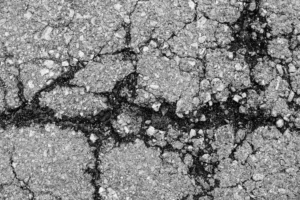Are you wondering what maintenance tasks you should prioritize for your asphalt paving? Look no further. In this article, we will discuss the essential maintenance requirements you need to consider.
From regular cleaning to filling cracks and potholes, sealing, resurfacing, and ensuring proper drainage, we’ve got you covered. By following these recommendations, you can ensure the longevity and durability of your asphalt pavement.
Get ready to learn the ins and outs of asphalt maintenance.
Asphalt Paving Maintenance Key Takeaways
- Regular cleaning and maintenance, such as sweeping and power washing, are crucial for maintaining the appearance and longevity of asphalt paving.
- Promptly filling cracks and potholes is necessary to ensure the integrity and safety of the pavement and to prevent further damage and costly repairs.
- Applying sealcoating to the asphalt surface helps protect it from UV rays, water, chemicals, and oil or gas spills, extending its lifespan and reducing the risk of damage.
- Periodic resurfacing is essential to prevent deterioration, provide a smooth surface, and protect the underlying layers from water infiltration and structural damage.
Regular Cleaning
To maintain your asphalt paving, you should regularly clean it by sweeping and power washing.
Regular cleaning is essential to ensure the longevity and appearance of your asphalt surface.
Sweeping should be done at least once a week to remove loose debris such as leaves, dirt, and small rocks. This helps prevent them from accumulating and causing damage to the asphalt.
Power washing, on the other hand, should be done every few months or as needed to remove stubborn stains, oil spills, and other contaminants. Using a pressure washer with the appropriate nozzle and detergent, you can effectively remove these substances without damaging the asphalt.
Fill Cracks and Potholes
To maintain the integrity and safety of your asphalt paving, you should promptly fill any cracks and potholes that may appear. Pothole repair and crack sealing are essential maintenance tasks that prevent further damage and extend the lifespan of your pavement.
Potholes occur when the asphalt surface weakens and collapses, forming a hole. Ignoring potholes can lead to more extensive damage and costly repairs.
To fix potholes, the damaged area is cleaned, filled with asphalt patching material, and compacted to ensure a smooth and durable surface.
Crack sealing involves filling the cracks on the pavement’s surface to prevent water infiltration and the expansion of cracks due to freeze-thaw cycles. This maintenance task helps prevent further deterioration and extends the life of your asphalt.
By addressing cracks and potholes promptly, you can maintain a safe and attractive asphalt surface that lasts for years to come.
| Maintenance Task | Description |
|---|---|
| Pothole Repair | Clean, fill with asphalt patching material, compact |
| Crack Sealing | Fill cracks to prevent water infiltration and further damage |
Sealcoating
One important maintenance requirement for asphalt paving is the application of sealcoating to protect the surface.
Sealcoating is a protective layer that’s applied to the surface of asphalt pavement. It acts as a barrier against damaging elements such as UV rays, water, and chemicals.
The benefits of sealcoating are numerous. Firstly, it helps to extend the lifespan of the pavement by preventing cracks and deterioration. It also enhances the appearance of the pavement, giving it a fresh, black finish. Additionally, sealcoating reduces the risk of damage caused by oil and gas spills, as well as the formation of potholes.
Periodic Resurfacing
To maintain the integrity and longevity of your asphalt pavement, you should periodically resurface it. Periodic resurfacing is crucial in preventing the deterioration of your asphalt and ensuring its long-term functionality. Here are four preventive measures that highlight the cost-effectiveness of periodic resurfacing:
- Identifying and repairing any cracks or potholes in the asphalt surface helps prevent further damage and deterioration. This proactive approach saves you money by addressing small issues before they become major problems.
- Applying a fresh layer of asphalt provides a smooth and even surface, enhancing the appearance and functionality of your pavement. It also eliminates any unevenness caused by wear and tear over time.
- Resurfacing helps protect the underlying layers of your pavement from water infiltration, which can lead to structural damage. This preventive measure extends the life of your asphalt and reduces the need for costly repairs.
- Regular resurfacing allows you to maintain your pavement at a fraction of the cost of a complete replacement. By addressing minor issues before they escalate, you save money in the long run while ensuring the optimal performance of your asphalt pavement.
Proper Drainage
Ensure proper drainage to maintain the integrity and longevity of your asphalt pavement. Preventing water damage is crucial to improving pavement longevity.
Without proper drainage, water can seep into the asphalt, leading to cracks, potholes, and other forms of damage. To prevent this, it is essential to have a well-designed drainage system in place.
This system should effectively collect and redirect water away from the pavement, ensuring that it does not accumulate or penetrate the asphalt surface. Here is a table highlighting the key elements of a proper drainage system:
| Key Elements of Proper Drainage System |
|---|
| 1. Adequate slope for water runoff |
| 2. Properly designed drainage channels |
| 3. Well-placed catch basins and inlets |
| 4. Regular maintenance and cleaning |
| 5. Use of permeable paving materials |
Conclusion
In conclusion, maintaining asphalt paving is crucial for its longevity and appearance.
Regular cleaning, filling cracks and potholes, sealcoating, periodic resurfacing, and ensuring proper drainage are essential maintenance requirements.
By following these steps, you can extend the life of your asphalt surface and prevent costly repairs down the road.
Remember, an ounce of prevention is worth a pound of cure, so don’t let your asphalt pavement fall through the cracks – take action today!



